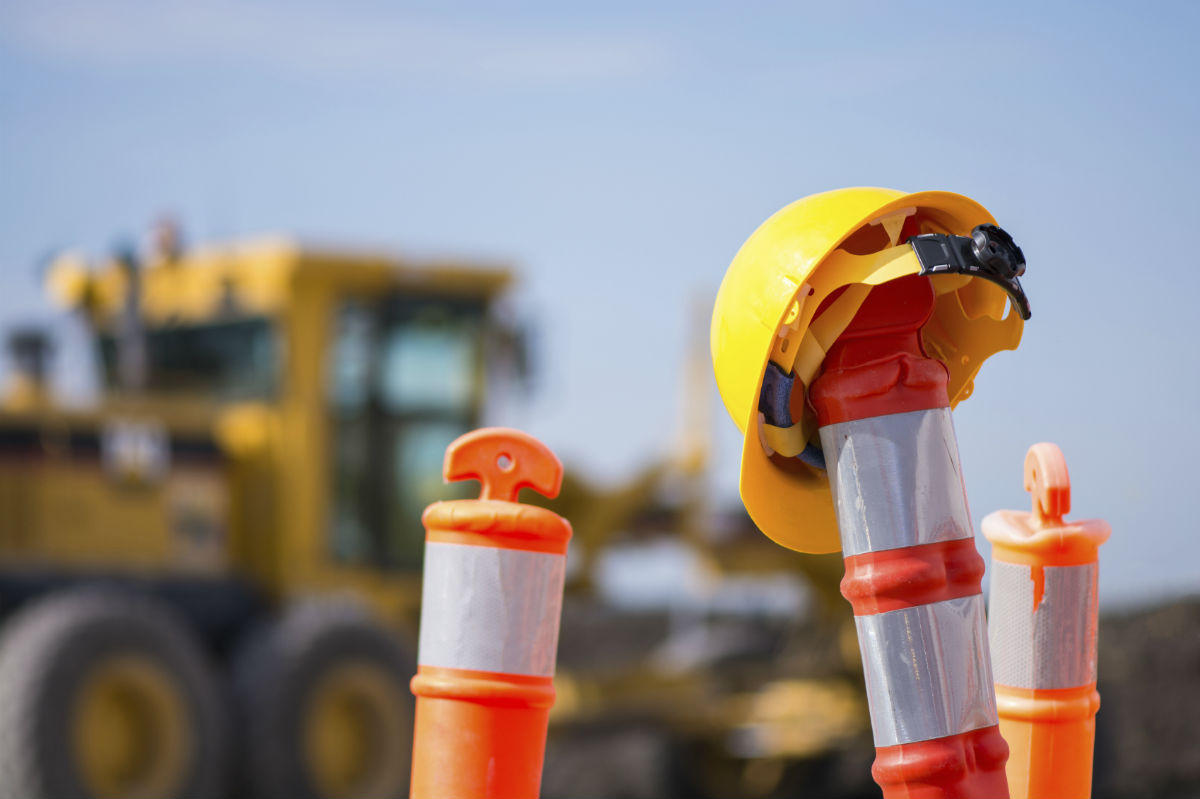All employers in the United States are required to comply with OSHA guidelines for workplace safety. Any violations can result in fines and penalties.

Formed under the Occupational Safety and Health Act in 1970, the Occupational Safety & Health Administration (OSHA) is a federal organization that operates under the Department of Labor to ensure safe and healthy work environments. Since its formation, OSHA has helped decrease work-related injuries and illnesses by around 67 percent by enforcing standards and providing workplace safety training. All employers in the United States are required to comply with OSHA guidelines for workplace safety.
Fall Protection
Construction employers have a responsibility to ensure proper fall protection for their employees. For example, employers are required to ensure there are proper guardrail systems, canopy structures, and leading edges in the workplace.
Hazard Communication Standards
Employers should categorize and label all containers of hazardous chemicals properly. Each container of hazardous chemical must have a proper label on it, and a safety data sheet should be kept on file.
Scaffolding Standards
Around 2.3 million construction workers use scaffolds on the job site. Working on scaffolds is risky and dangerous. Injuries from scaffolding accidents are common at construction sites. In an attempt to reduce the risk of scaffolding accidents, strict safety guidelines for employers have been implemented.
Respiratory Protection
Employers from certain industries are required to protect their employees from respiratory hazards. OSHA respiration protection standards are violated when an employer fails to:
- provide necessary equipment
- follow cleaning and inspection protocols
- provide proper training
Powered Industrial Trucks
Clear guidelines are provided to employers on how to deal with safety requirements pertaining to fire protection, design, maintenance, and use of tractors, fork trucks, motorized hand trucks, platform lift trucks, and other specialized trucks powered by internal combustion engines or electric motors.
Control of Hazardous Energy
Employers are required to regularly maintain and service machines and factory tools following specific guidelines. These safety guidelines are designed to prevent a sudden release of stored energy, which often result in serious workplace injuries. These guidelines are violated when employers do not use tags, self-locking fasteners, or wedges to block a machine from an energy source.
Standards for Ladders
Employers also are given OSHA standards for ladders. Falls from ladders are a common cause of workplace accidents.
Workplace Injury and Accident Causes
Asbestos Exposure
Asbestos Removal
Second Hand Asbestos Exposure
Sexual Assault Workplace
Physical Assault at Workplace
Workplace Injuries Assembly Line
At Fault Accident
Workplace Attack
Benzene Exposure
Injured on Lunch Break
Building Collapse
Workplace Bullying
Chemical Exposure in the Workplace
Chemical Hazards in the Workplace
Cold Stress in the Workplace
Combustible Dust Explosion
Computer Use
Construction Site Accident
Conveyor Belt Accident
On the Job Injury Cause by Coworker
Crane Accident
Injuries from Desk Jobs
Diesel Exhaust Fumes Exposure
Digging Injury
Breaking Company Policy
Drowning at Work
Workplace Drug Use
Electrical Workplace Accidents
Elevator Accident
Equipment Accident
Ergonomics in the Workplace
Excessive Overtime
Workplace Explosion
Extreme Danger
Fall at Work
Fire in the Workplace
Slicer Accident
Forklift Accident
Walk in Freezer
Gas Pipeline Accident
Hard Work
Workplace Hazardous Substances
Hazardous Equipment in the Workplace
Heavy Machinery Accident
Horseplay in the Workplace
Danger at Workplace
Insomnia in the Workplace
Jumping Accident
Ladder Falls at Work
Loading Dock Accident
Machinery Accident Workplace
Equipment Failure Accident
Mining Accident
Mold in the Workplace
Nail Gun Accident
Workplace Noise
Non Collision Accident
Heavy Objects
Workplace Office Equipment
Opioid Use
Injury at Work Due to OSHA Violation
Overexertion Injuries at Work
Use of Pain Killers
Power Tool Injury
Inadequate PPE
Repetitive Motion Injuries in the Workplace
Mansfield Bar
Scaffolding Accident
Secondhand Smoke in the Workplace
Side Effects
Silica Exposure
Sleep Disorder
Slip and Fall Injuries in the Workplace
Stairs at Work
Struck by a Vehicle
Tar Fumes
Toxic Chemical Exposure
Toxic Fumes in the Workplace
Car Accident While Working
Trench Collapse
Trips at Work
Unsafe Working Conditions
Workplace Violence
Welding Injury
Winter Hazards in the Workplace
Working Shifts
